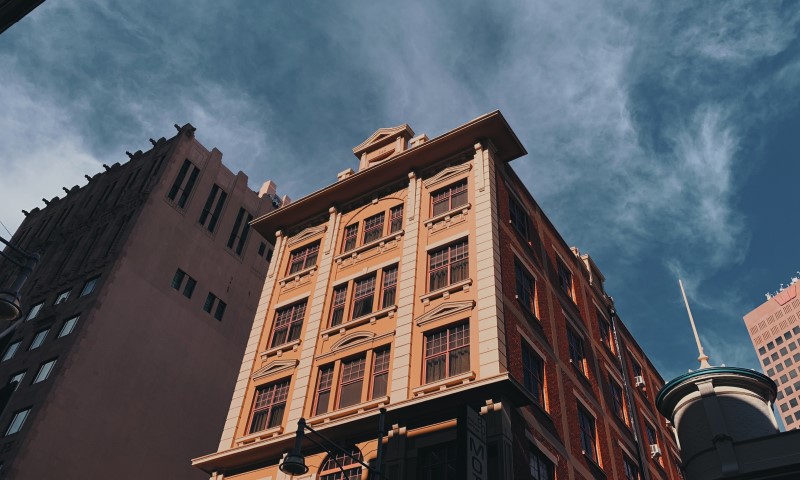I often get asked when working on existing buildings, “What upgrades will be required?” Unfortunately, this is often not a straightforward question to answer. My experience is primarily working with the British Columbia Building Code (BCBC) and Vancouver Building By-law (VBBL), so this post will focus on these codes. Let me know your experience working in other jurisdictions.
Building Code Application
The building code application is limited to specific situations as stated in Article 1.1.1.1. of the BCBC and VBBL. This obviously includes the design and construction of new buildings. The codes apply to existing buildings only when the buildings are undergoing some type of change (change in occupancy, alterations, even demolition). Buildings are not required to be upgraded every time a new code is issued.
In general, the BCBC simply states that “where a building is altered, rehabilitated, renovated or repaired, or there is a change in occupancy, the level of life safety and building performance shall not be decreased below a level that already exists.” (1.1.1.2.(1) of Division A). On the surface, this seems simple enough; however, since Article 1.1.1.1. of Division A also states the code applies to changes of use, it can be difficult to decide exactly where to draw the line when it comes to current code requirements. It is rare that a building will be completely upgraded to meet the current code following a change of use, but the BCBC and National Building Code provide little guidance on where the line is.
Designers should identify nonconformities with respect to the current code that are either existing conditions or triggered by the proposed works and evaluate the costs vs. benefits of upgrading the existing building to meet current code. In most cases, nonconformities created by the proposed works will need to be corrected. Some discussion with the Authority Having Jurisdiction at the beginning of a project is usually beneficial once these nonconformities have been identified.
The building codes are written based primarily on the application to new construction, where the balance between costs and safety can be significantly different from renovations. Some requirements may even be impossible to feasibly upgrade to achieve compliance in existing buildings. Alternative solutions can be a cost effective method of achieving the objectives of the building code for existing buildings where the prescriptive solutions provided in Division B are not feasible.
VBBL Upgrade Mechanism
The Vancouver Building By-law differs significantly from the BCBC and National Building Code when it comes to existing buildings. The VBBL has an entire unique section in Division B dedicated to existing buildings – Part 11.
Part 11 of the VBBL does two things:
- Outlines applicable upgrades that are required to existing conditions based on the scope of work.
- Provides alternative compliance measures for existing conditions.
The upgrade mechanism in the VBBL outlines different upgrade levels based on the category of work included in a project. Categories of work include minor renovation, major renovation, change of major occupancy, additions (minor/major, vertical/horizontal), and others. The benefit of this approach is that the required upgrades generally scale well with the scope of the project and its impact on life safety and building performance.
The alternative compliance measures provided recognize that it is often not feasible to fully upgrade the existing conditions present, and offers practical alternative to reduce the compliance gap between the current code and existing condition. The alternative compliance measures can be used to meet the required upgrade levels for the project for existing conditions only. It is important to remember that all new construction, even within an existing building, is required to meet the requirements of the VBBL without applying the Part 11 relaxations.
BCBC Alternate Compliance Measures
The BCBC includes alternate compliance measures specifically for heritage buildings in Table 1.1.1.1.(5) of Division A to aid in conservation in heritage buildings. The table provides relaxations to other code requirements elsewhere in the code. Most of these relaxations require the building to be sprinklered.
Table 1.1.1.1.(6) was also recently added to Division A, which provides alternate compliance methods for alterations to existing buildings to add a secondary suite to reduce compliance barriers for home owners wishing to add a secondary suite to their homes. The goal of these alternative compliance measures is similar to those provided in Part 11 of the VBBL; however, the BCBC does not prescribe upgrade levels for existing building projects.
Where Are We Headed?
It is widely acknowledged across the industry that, with the exception of a select few jurisdictions, our building codes in Canada do not provide enough consistency when it comes to existing buildings. A lack of consistency leads to confusion, uncertainty, under performance, and reduces mobility between jurisdictions.
The Building and Safety Standards Branch (BSSB) in BC, the organization responsible for administrating the BCBC, has begun consultation for development of an alterations code for existing buildings. More information is available on their website. The timeline given in their Phase 1 consultation report is to adopt a code for existing buildings by 2024 (I am not aware if this is still their target). Their website also links to a report from the Canadian Commission on Building and Fire Codes that provides some recommendations and key principles for an alteration to existing buildings code.
I am hopeful that the wheels have started to turn on this issue and that we will see some progress made in the next decade. Existing buildings make up the most significant portion of our building stock, so I feel that consistent requirements for existing buildings represent a significant opportunity to improve the life safety, accessibility, and energy efficiency of our built environment.

